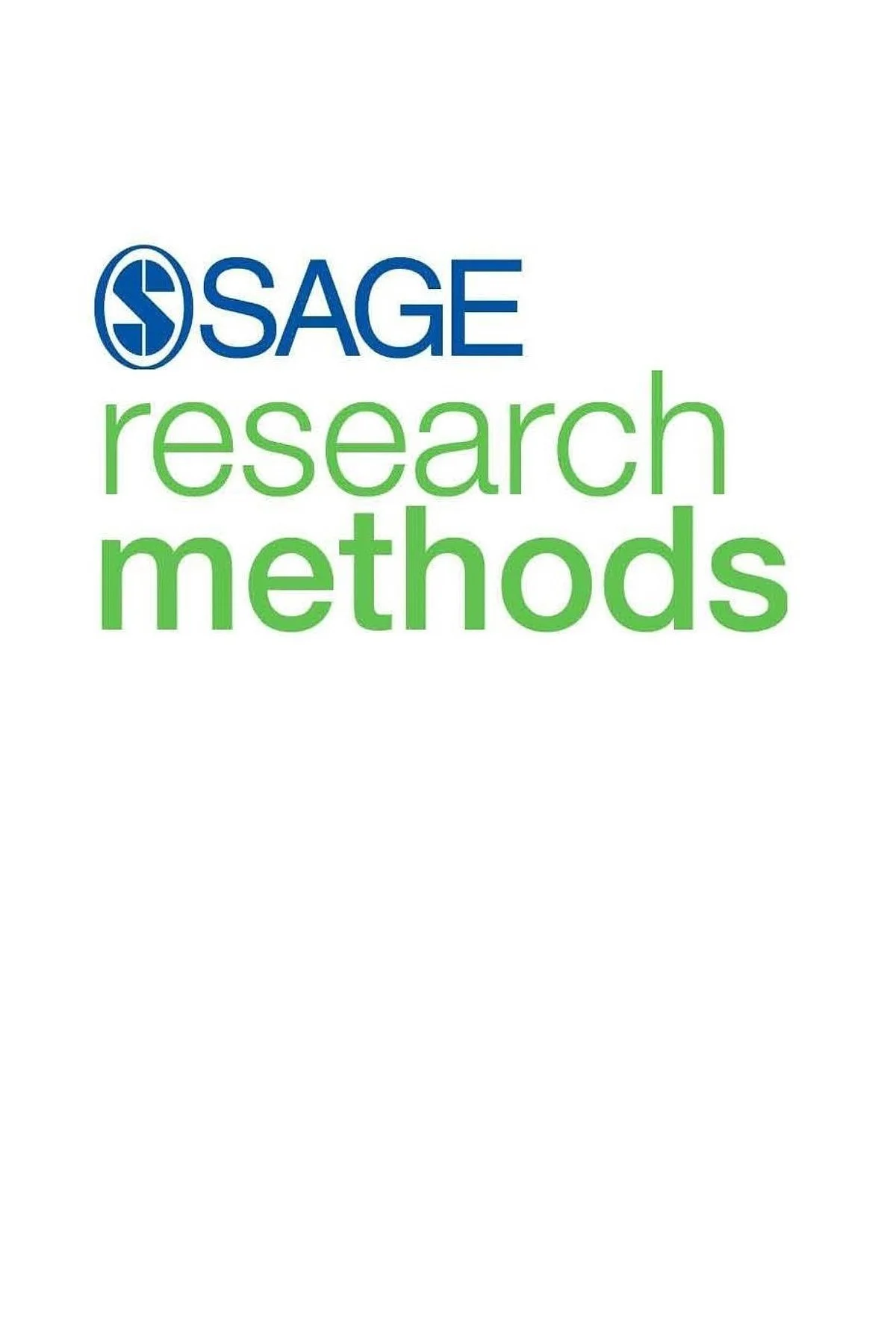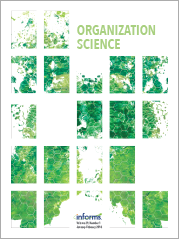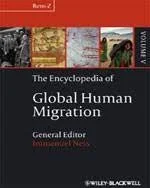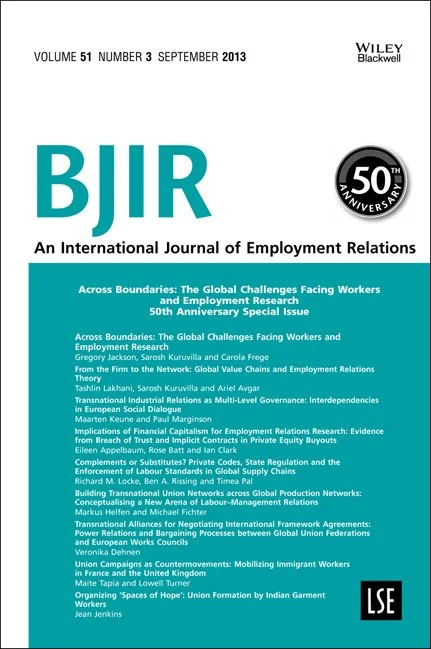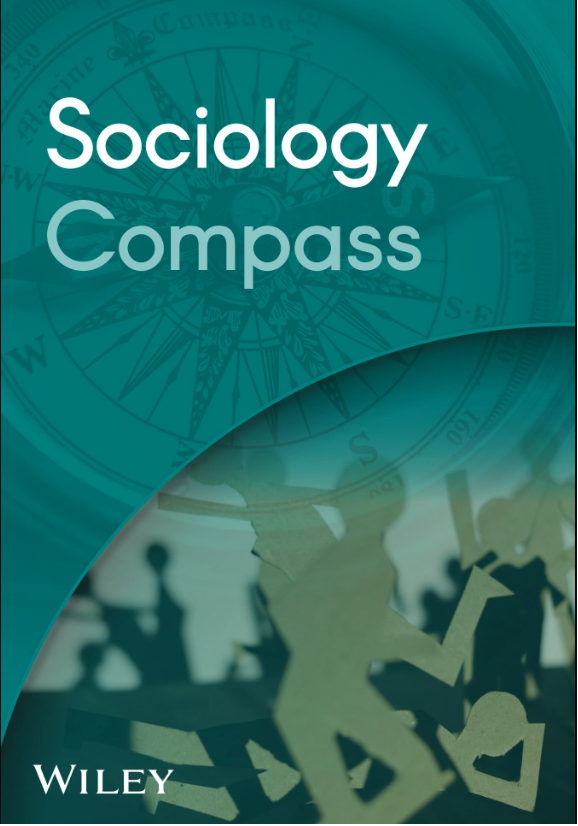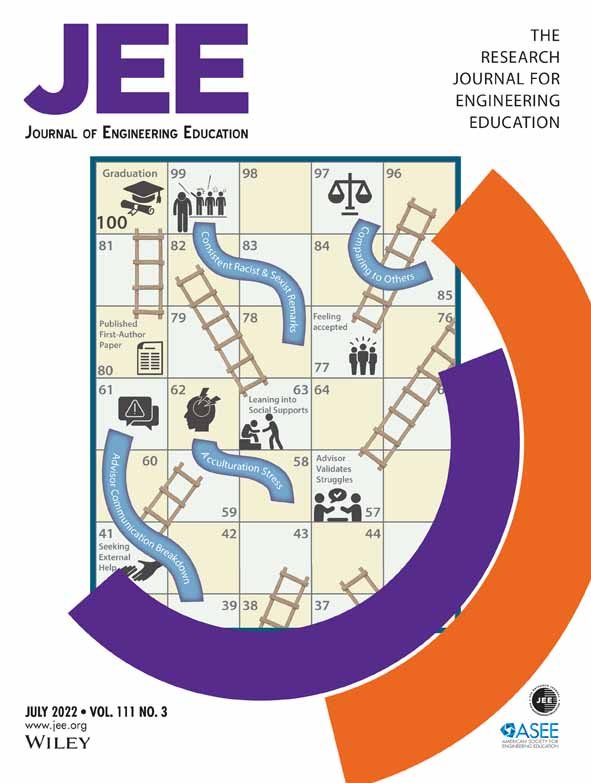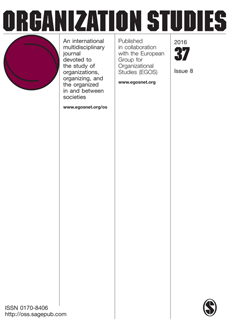The Need for Speed: The Role of Employers in Immigrant Work Visa Regulatory Prioritization
with Laura Carver. 2024. ILR Review. [Journal] [Appendix] [Pre-production]
-
Employers are central, yet understudied, actors in the immigrant work authorization process. We motivate and empirically assess three central theoretical accounts to explain employers’ regulatory prioritization of specific immigrant work visa applications, including the role of immigrant human capital, employers’ past filing experience, and the relative dissimilarity of the focal application to employers’ past applications. These accounts are tested using U.S. CIS administrative records pertaining to the H-1B temporary work visa. We analyze employers’ selective visa application prioritization as reflected in their use of “premium processing” to expedite government visa adjudication, persistence to the point of adjudication (i.e., not withdrawing or abandoning the application), and requests for longer employment durations. We primarily find support for the human capital and relative dissimilarity accounts. Results underscore the role of employers in visa processing speeds, the granting of legal status, and legal status durations—outcomes more frequently attributed to regulator discretion.
Collecting, Coding, and Analyzing Observational Records from Real Organizations: “Best in Class” Analytical Techniques
with Emilio J. Castilla. 2023. SAGE Research Methods Cases: Business & Management. [Research Case]
-
Experimental manipulation through random assignment has important benefits for social scientists and data analysts, but this method is not always possible, feasible, or desirable. In such circumstances, researchers often analyze observational data (also termed archival data), which are typically generated and retained for purposes other than addressing research questions. Analysis of observational records generally allows researchers and practitioners to observe patterns or correlations between variables of interest, but demonstrating causality or explaining “why” a relationship exists may not be possible. Given this substantial constraint, methodologists have developed key analytical techniques that enable researchers to address certain fundamental challenges inherent in assessments of observational data. Using our previously published study of applicant endorsements in a full-time MBA program as a reference, we overview our use of several such analytical techniques, including blinded assessments, time gaps/lags, matching, selection models, and multi-method research. We close with an overview of other prominent techniques not used in our study but similarly valuable for the analysis of observational data including natural experiments, instrumental variable analyses, and longitudinal/time-varying models. For each of the analytical techniques reviewed, we direct readers to helpful resources elsewhere where they may continue learning about such techniques.
Inside Jobs: Salary Setting for Immigrants Crossing Establishment, Organizational, and National Boundaries
with Kwan Lee. 2022. ILR Review 75(2):1159-1188. [Journal] [Appendix] [Summary] [AoM Best Paper Proceedings]
-
Using novel US Department of Labor administrative records, the authors test theoretical mechanisms to account for variation in immigrant workers’ starting salaries following key career transitions. Specifically, they examine differences in the base starting salaries and discretionary starting salary increases above these base starting salaries for 1) same-establishment hires, relative to 2) US-based establishment transfers, 3) international establishment transfers, 4) US-based external hires, and 5) international external hires. In support of the “insider premium” account, findings show that same-establishment hires tend to work in jobs with greater requirements, and thus higher base starting salaries. In partial support of the “outsider premium” account, findings show that US-based external hires receive larger starting salary increases than do same-establishment hires, conditional on the jobs they enter. This said, international external hires receive smaller starting salary increases than do same-establishment hires. Findings reveal distinct mechanisms, acting separately or in tandem, during salary-setting processes.
Trust but Sometimes Verify: Regulatory Enforcement in Attestation-based Immigration Programs
-
This study examines a little-known but prolific form of regulation: organizations’ self-reported compliance attestations. The paper presents systematic analyses of multiple assessment procedures in the U.S. Department of Labor’s (DoL) labor certification program, a frequent requirement for immigrant employment-based permanent residency. In applications, employers attest to (i) recruiting a qualified immigrant and (ii) the lack of available U.S. workers. DoL assessment procedures to evaluate compliance include: reviewing attestations alone, auditing for supporting documentation (due to agent discretion, random selection, or automated triggers), or inspecting employer activities (due to agent discretion or automated triggers). Administrative records reveal differential approval by assessment procedure, and interviews reveal selective enforcement of DoL regulatory mandates. Reviews of attestations alone (95.9 percent approved) generally targeted employers’ hiring of a qualified immigrant. Assessment procedures involving auditing and inspection granted fewer approvals and frequently also examined U.S. worker availability. Findings emphasize case sorting as a key process shaping enforcement.
Strength from Within: Internal Mobility and the Retention of High Performers
with Alan Benson. 2020. Organization Science 31(6):1313-1620. [Journal] [Pre-publication] [Appendix] [Summary]
-
We develop and test a theoretically-informed and generalizable empirical framework for evaluating the performance gap between internally and externally hired workers. First, human capital theory predicts internal hires will be immediately more productive than external hires. Second, contextual learning predicts internal hires will be more productive with time. Finally, theories of commitment, which are rarely applied to this literature, predict that internal advancement enhances retention among high performers (“positive retention”). Applying a general empirical framework for quantifying these mechanisms to a retailer with 109,063 commissioned salespeople and their 12,931 managers, we find the gap in our setting is primarily driven by positive retention: high performers and internal hires are less likely to quit, and crucially, high performing internal hires are especially unlikely to quit. When high performing internal hires do quit, they tend to cite nonwork related reasons rather than advancement opportunities. Firm-specific skills and contextual learning may be less relevant in our setting than theories that link internal advancement to the retention of high performers. By examining performance and retention in isolation, researchers and organizations may be underestimating the importance of internal advancement as a means of retaining of high performers.
Best in Class: The Returns on Endorsement in Business School Admissions
with Emilio J. Castilla. 2019. Administrative Science Quarterly 64(1):230–270. [Journal] [Appendix] [Summary]
-
While scholars have shown that well-connected applicants are advantaged in selection processes, less understood is whether such applicants produce important returns to the organization when key decision makers favor them. We begin to address this gap by investigating whether and why application endorsements―an informal practice whereby certain individuals (i.e., endorsers) advocate for particular applicants―affect organizational selection during the screening of applicants. Through the analysis of the population of 21,324 applicants to a full-time MBA program over a seven-year period, we find that even after controlling for individual qualifications and competencies, endorsed applicants are advantaged over non-endorsed applicants in admissions interview and offer decisions. In seeking to explain this advantage, we develop and test four key theoretical explanations pertaining to the potential returns on application endorsements for the organization. We find inconsistent evidence that endorsed applicants are “better qualified” compared with non-endorsed applicants during screening: while endorsed applicants are sometimes assessed to be stronger “on paper,” they generally receive lower competency assessments than non-endorsed applicants later, during the admissions interviews. Further, our analysis of data on matriculating MBA students reveals that those endorsed as applicants are not “better performers” academically (measured by grade point average) or in the job market after graduation (measured by full-time salaries or signing bonuses) compared with non-endorsed individuals. In contrast, individuals endorsed as applicants appear to be “better citizens” upon joining the organization—in our research setting, they are more likely to participate in student club leadership roles than non-endorsed individuals. We also find that they are “better alumni”―that is, they make larger monetary donations to the school after graduating than their non-endorsed counterparts. We conclude with implications for understanding the impact of application endorsements on labor and educational markets.
Testing Attestations: U.S. Unemployment and Immigrant Work Authorization
with Emilio J. Castilla. 2016. ILR Review 69(5):1081–1113. [Journal] [Appendix]
-
Each year, hundreds of thousands of immigrants seek legal employment in the United States. Similar to many developed countries, the United States has established immigration policies to protect its citizens’ employment. This study empirically assesses, for the first time, the relationship between U.S. workers’ unemployment rates and immigrant work authorization outcomes, as determined by one key U.S. immigration program—the labor certification process. This program explicitly requires that no willing and qualified U.S. worker be available for the job position offered to a foreign worker. Through the analysis of 40 months of labor certification requests evaluated by U.S. Department of Labor agents, the authors find that, ironically, immigrant labor certification approvals are more likely when the quantity of unemployed U.S. workers within an occupation is high, ceteris paribus. Further, because of the U.S. government’s procedure of auditing applications, the authors are able to assess approval differences when government agents reach similar labor certification decisions using 1) employers’ accounts of their own compliance (e.g., “attestations”) or 2) supporting documentation collected when employers are audited. Only for evaluations of audited applications, in support of the literature on accounts and regulation, are approvals less likely when unemployment is high. The authors conclude by discussing the implications of their findings for theories and policies concerning labor market regulation, immigration, and employment.
House of Green Cards: Statistical or Preference-Based Inequality in the Employment of Foreign Nationals
with Emilio J. Castilla. 2014. American Sociological Review 79(6):1226-1255. [Journal] [Appendix] [Summary] [AoM Best Paper Proceedings]
-
While scholars have shown that well-connected applicants are advantaged in selection processes, less understood is whether such applicants produce important returns to the organization when key decision makers favor them. We begin to address this gap by investigating whether and why application endorsements―an informal practice whereby certain individuals (i.e., endorsers) advocate for particular applicants―affect organizational selection during the screening of applicants. Through the analysis of the population of 21,324 applicants to a full-time MBA program over a seven-year period, we find that even after controlling for individual qualifications and competencies, endorsed applicants are advantaged over non-endorsed applicants in admissions interview and offer decisions. In seeking to explain this advantage, we develop and test four key theoretical explanations pertaining to the potential returns on application endorsements for the organization. We find inconsistent evidence that endorsed applicants are “better qualified” compared with non-endorsed applicants during screening: while endorsed applicants are sometimes assessed to be stronger “on paper,” they generally receive lower competency assessments than non-endorsed applicants later, during the admissions interviews. Further, our analysis of data on matriculating MBA students reveals that those endorsed as applicants are not “better performers” academically (measured by grade point average) or in the job market after graduation (measured by full-time salaries or signing bonuses) compared with non-endorsed individuals. In contrast, individuals endorsed as applicants appear to be “better citizens” upon joining the organization—in our research setting, they are more likely to participate in student club leadership roles than non-endorsed individuals. We also find that they are “better alumni”―that is, they make larger monetary donations to the school after graduating than their non-endorsed counterparts. We conclude with implications for understanding the impact of application endorsements on labor and educational markets.
Highly-skilled Information and Technology Migrant Workers
2013. Encyclopedia of Global Human Migration, edited by I. Ness and P. Bellwood. Hoboken, NJ, United States: Wiley Blackwell: 1646-1651. [Chapter]
-
Each year, hundreds of thousands of highly skilled information and technology (IT) workers cross national boundaries for work opportunities. These skilled foreign workers, typically sponsored on employer-initiated work visa programs, are employed in a variety of telecommunication, professional-service, and computer-related occupations. Moreover, these immigrants work in positions requiring creative thinking and technical knowledge, but also in jobs involving basic and routine tasks. As highly educated workers with specialized skills, this group's movement has important economic and developmental implications for both destination and source countries.
Complements or Substitutes? Private Codes, State Regulation and the Improvement of Labor Standards in Global Supply Chains
with Richard M. Locke and Timea Pal. 2013. British Journal of Industrial Relations: 51(3):519-552. [Journal] [Manuscript]
-
Recent research on regulation and governance suggests that a mixture of public and private interventions is necessary to improve working conditions and environmental standards within global supply chains. Yet less attention has been directed to how these different forms of regulation interact in practice. The form of these interactions is investigated through a contextualized comparison of suppliers producing for Hewlett-Packard, one of the world's leading global electronics firms. Using a unique dataset describing Hewlett-Packard's supplier audits over time, coupled with qualitative fieldwork at a matched pair of suppliers in Mexico and the Czech Republic, this study shows how private and public regulation can interact in different ways — sometimes as complements; other times as substitutes — depending upon both the national contexts and the specific issues being addressed. Results from our analysis show that private interventions do not exist within a vacuum, but rather these efforts to enforce labour and environmental standards are affected by state and non-governmental actors.
Social Networks and Employment: Mechanisms (Part 1)
with Emilio J. Castilla and George Lan. 2013. Sociology Compass. 7(12):999-1012. [Journal]
-
While substantial progress has recently been made in the literature on social networks and employment, this research has not been accompanied by a larger organizing framework. In this article, we attempt to provide such framework while reviewing the literature that addresses the context of work and employment from a social network perspective – that is, research based on the assumption that actors are embedded in networks of social relations and interactions. In particular, our review focuses on the primary mechanisms that help explain how networks may shape employment outcomes and processes, namely, by conveying resources and providing signals to others. Ties among social actors may transfer better or unique resources such as information, learning, influence, and support, which consequently may affect key employment outcomes. Ties may also provide signals concerning ability, legitimacy/trust, status, and relationship meaning. We conclude by presenting a number of alternative arguments in the literature and discussing future directions for the research on social networks and employment.
Social Networks and Employment: Mechanisms (Part 2)
with Emilio J. Castilla and George Lan. 2013. Sociology Compass. 7(12):1013-1026. [Journal]
-
In this second article, we continue to survey research that addresses work and employment from a social network perspective. Building on a companion article in this volume, which explores in-depth the main network mechanisms presented in the literature, this article reviews studies addressing how social networks may shape key employment outcomes for both individuals and organizations. Network access and activation may shape individuals' selection into employment opportunities in addition to a variety of post-hire outcomes including employee performance, promotion, rewards, job satisfaction, and termination. Organizations too may be influenced by their network position and by the activation of certain ties, ultimately affecting key outcomes such as firm performance, innovation, and learning measures. We conclude by discussing promising areas for future research on how social networks interact with employment.
How Many Highly Skilled Foreign-Born are Waiting in Line for U.S. Legal Permanent Residence?
with Guillermina Jasso, Vivek Wadhwa, Gary Gereffi, and Richard Freeman. 2010. International Migration Review 44(2): 477-498. [Journal]
-
While the United States welcomes foreign-born students and trainees and, less warmly, temporary workers such as H-1B visa holders, it places an array of requirements, obstacles, and delays upon persons who would like to make the U.S. their permanent home. The number of people in the queue for legal permanent residence (LPR) is, however, difficult to ascertain. This paper estimates the number of highly skilled foreign-born persons waiting for LPR via the three main employment-based categories, separately by whether they are living in the United States or abroad, as well as the number of family members. We find that as of the end of FY 2006 there were about half a million employment-based principals awaiting LPR in the United States, together with over half a million family members, plus over 125 thousand principals and family members waiting abroad. These numbers dwarf the visas available annually – 120,120 plus any not used in the family preferences – suggesting that the long delays in gaining legal permanent residence are a visa number problem, not an administrative processing problem, as many believe. The backlog thus cannot be eliminated without a large change in public policy. The delay in gaining legal permanent residence could contribute to the decision of many highly skilled foreign-born to leave the United States.
Getting the Numbers Right: International Engineering Education in the United States, China and India
with Gary Gereffi, Vivek Wadhwa, and Ryan Ong. 2018. Journal of Engineering Education 97(1):13-25. [Journal] [Manuscript]
-
This article challenges the commonly cited statistics for engineering graduates in the United States, China, and India. Our research shows that the gap between the number of engineers and related technology specialists produced in the United States versus those in India and China is smaller than previously reported, and the United States remains a leading source of high-quality global engineering talent. Furthermore, engineering graduates in China and India face the prospect of substantial unemployment, despite high corporate demand for their services; this raises questions about the quality of recent graduates. The United States, however, also confronts problems in its continued ability to attract and retain top engineering talent from abroad because of visa uncertainties and growing economic opportunities in their countries of origin. We argue that the key issue in engineering education should be the quality of graduates, not just the quantity, since quality factors have the biggest impact on innovation and entrepreneurship.
Book Review of The Diversity Bargain and Other Dilemmas of Race, Admissions, and Meritocracy at Elite Universities
2017. Administrative Science Quarterly. Sage Publications: 1-3. [Review]
-
Admission into one of the world’s most prestigious universities is frequently the result of innate ability, years of effort, and access to social and financial resources that might allow a dedicated individual to cultivate the acumen and experiences rewarded by admissions committees. Yet such ostensibly meritocratic admissions systems may risk conflating ability and effort with (potentially unequal) opportunities to succeed. Given the significance of a university education for individuals’ economic success, substantial academic research has explored whether admissions systems that aspire to achieve meritocratic judgments may nonetheless reproduce socioeconomic and racial stratification. Other scholars have focused on students themselves, examining how they navigate the social and academic demands of the college experience and subsequent job search efforts. But how do undergraduates think about issues of race, merit, and opportunity? This is the central question in The Diversity Bargain.
Book Review of Pedigree: How Elite Students Get Elite Jobs
2016. Organization Studies. Sage Publications: 1189-1192. [Review]
-
We’ve all heard the conventional wisdom about the randomness and unpredictability associated with hiring decisions. At some point during the hiring process, an apparent coin toss occurs, and qualified job applicants are left to ponder what subtleties may have contributed to their exclusion from a potentially lucrative position at a desirable firm. In Pedigree, Lauren Rivera explores these often unseen dynamics that can affect employment decisions shaping access to some of the world’s most elite professional service firms. Such coin tosses are not entirely random; some outcomes are the product of inside knowledge, careful preparation, and cultivated participation in extracurricular activities. Successful applicants often convey “fit” (that is, social and cultural similarity) with a firm’s existing workforce. This demonstrated “cultural capital” is the focal subject of Pedigree.

